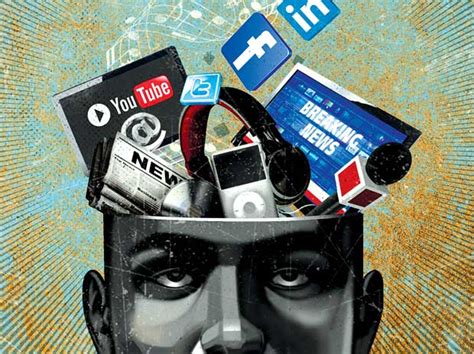

Social Media: A Powerful Tool of Communication in 2025
Social media has become an indispensable tool for communication in the modern world. With billions of users worldwide, it offers a platform for individuals, businesses, and organizations to connect with each other, share information, and build relationships.

The Rise of Social Media
In the early days of the internet, email was the primary means of online communication. However, the advent of social media platforms such as Facebook, Twitter, and Instagram revolutionized the way people interact with each other online. These platforms allowed users to create profiles, connect with friends and family, and share updates about their lives.
The accessibility and ease of use of social media have contributed to its rapid growth. As of 2023, there are an estimated 4.74 billion social media users worldwide. This number is expected to grow to 6.64 billion by 2025, representing over 80% of the world’s population.
The Benefits of Using Social Media for Communication
Social media offers numerous benefits for communication, including:
- Global Reach: Social media platforms have a global reach, allowing users to connect with people from all over the world.
- Cost-effectiveness: Communication through social media is virtually free, making it an affordable option for businesses and individuals alike.
- Speed and Convenience: Social media allows for real-time communication and the instant sharing of information.
- Interactive Features: Social media platforms offer interactive features such as commenting, liking, and sharing, which encourage engagement and discussion.
- Personalized Content: Users can customize their social media feeds to receive content that is relevant to their interests.
Social Media VS Traditional Media
Social media has emerged as a powerful alternative to traditional media for communication. While traditional media such as television, radio, and newspapers have a wider reach, social media offers several advantages:
- Two-way Communication: Social media allows for two-way communication, where users can interact with each other and with the content they consume.
- Real-time Updates: Social media provides real-time updates and allows for instant feedback, making it a valuable tool for breaking news and viral marketing.
- Targeted Advertising: Social media platforms offer sophisticated targeting options, enabling businesses to reach specific audiences with their ads.
Tips and Tricks for Using Social Media for Communication
To effectively use social media for communication, consider the following tips:
- Create a Content Calendar: Plan and schedule your social media posts in advance to ensure consistency and engagement.
- Use Hashtags: Hashtags help categorize your posts and make them discoverable to a wider audience.
- Engage with Your Audience: Respond to comments, ask questions, and participate in discussions to build relationships with your followers.
- Use Visual Content: Images and videos are more engaging than text-only posts, so incorporate them into your social media strategy.
- Measure Your Results: Track your social media performance using analytics tools to identify what’s working and what needs improvement.
Common Mistakes to Avoid
When using social media for communication, it’s important to avoid these common mistakes:
- Overposting: Avoid posting too frequently, as it can overwhelm your followers and lead to unfollows.
- Using Irrelevant Content: Only post content that is relevant to your audience’s interests and aligns with your brand or personal identity.
- Neglecting Customer Service: Respond promptly to customer inquiries and feedback on social media to maintain a positive brand image.
- Ignoring Negative Feedback: Don’t delete or ignore negative feedback; instead, address it professionally and try to resolve the issue.
Case Study: Social Media’s Impact on Customer Service
Social media has become a valuable channel for customer service. Companies can use social media to:
- Resolve Customer Issues: Customers often reach out to businesses via social media to report issues or ask questions.
- Build Relationships: Social media allows businesses to interact with customers in a personal and authentic way, fostering stronger relationships.
- Monitor Brand Reputation: Social media monitoring tools can help businesses track customer sentiment and identify potential reputational issues.
According to the American Express 2023 Customer Service Barometer, 63% of consumers prefer to contact businesses via social media.
FAQs
-
What is the most effective social media platform for communication?
The best social media platform for communication depends on your target audience and the nature of your message. Consider the demographics, interests, and communication preferences of your intended audience. -
How can I measure the effectiveness of my social media communication?
Use social media analytics tools to track metrics such as reach, engagement, and conversion rates. Regularly review your performance data and make adjustments to your strategy as needed. -
What are some creative ways to use social media for communication?
Conduct live Q&A sessions, host social media contests, create interactive quizzes or polls, and collaborate with influencers to reach new audiences. -
What are the ethical considerations when using social media for communication?
Respect user privacy, avoid spreading false or misleading information, and maintain transparency in your communication. Consider the potential impact of your social media posts on others and the wider community.
Conclusion
Social media has become an indispensable tool for communication in 2025. Its global reach, cost-effectiveness, speed, convenience, and interactive features make it an ideal platform for individuals, businesses, and organizations alike to connect with each other, share information, and build relationships. By understanding the benefits and best practices of using social media for communication, you can effectively leverage its power to enhance your communication strategy and achieve your business or personal goals.










